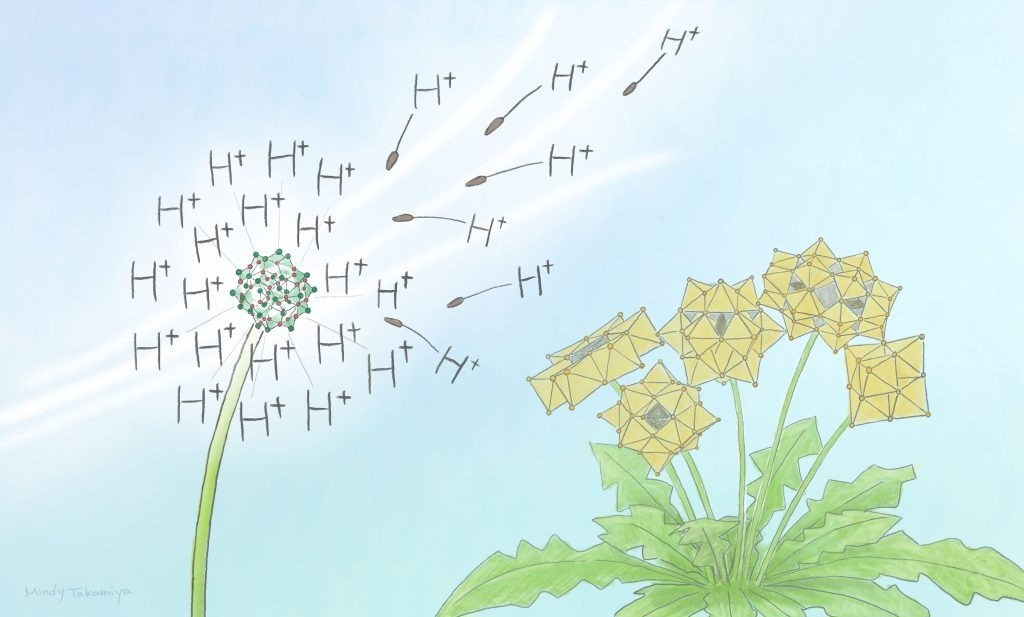A new cluster molecule has been discovered by researchers at Kyoto University’s Institute for Cell-Material Sciences, which might be beneficial as a catalyst.
 The metal oxide clusters obtained in this study are positively (+) charged unlike conventional negatively (–) charged ones. Its surface protons are highly acidic, which is important in catalysis. Image Credit: Mindy Takamiya/Kyoto University iCeMS.
The metal oxide clusters obtained in this study are positively (+) charged unlike conventional negatively (–) charged ones. Its surface protons are highly acidic, which is important in catalysis. Image Credit: Mindy Takamiya/Kyoto University iCeMS.
Polyoxometalates are compounds with a big metal-oxide cluster that has a negative charge. Antiviral medications, rechargeable batteries, and flash memory devices all include them.
The novel cluster chemical is a hydroxy-iodide (HSbOI) with massive, positively charged clusters, which is rare. Only a few positively charged cluster compounds have been discovered and researched thus far.
In science, the discovery of new material or molecule can create a new science. I believe that these new positively charged clusters have great potential.
Hiroshi Kageyama, Chemist, Kyoto University
In 1826, the very first metal oxide cluster was discovered. Hundreds of molecules containing negatively charged clusters have been synthesized since then, with features important in magnetism, catalysis, ionic conduction, biological applications, and quantum information.
Their qualities allow them to be used in a variety of sectors, including catalysis, medicine, and chemical synthesis.
In recent years, scientists have concentrated their efforts on synthesizing and studying molecules having positively charged clusters.
By chance, Kageyama and his colleague Ryu Abe discovered their positive cluster. Kageyama, a solid-state chemist, and Abe, a catalytic chemist, have been working together since 2016 to discover novel molecules that can absorb visible light for photocatalysis.
They were attempting to substitute the chlorine atom in a chlorine-containing (Sb4O5Cl2) molecule with iodine.
Kageyama added, “However, a new material that was completely different from what we expected was obtained accidentally.”
The scientists had anticipated a material with 22 atoms in the unit cell. Instead, they were given a molecule with 800 atoms in its unit cell.
The scientists could not figure out the structure of the molecule at first. When faced with the material’s complexity, a standard method called powder X-Ray diffraction failed.
After a year, Kageyama believed he could employ three-dimensional electron tomography, a cutting-edge electron microscopy method that has recently gained popularity, as a tool for imaging the protein's structure.
To work on the structure, the scientists recruited Artem Abakumov and Joke Hadermann from the University of Antwerp in Belgium. When their partners returned the data, the scientists were ecstatic to discover enormous clusters.
Further research revealed that the hydroxyiodide molecule contains acidic protons, which is crucial for catalysis.
“This finding may open up new possibilities in the design of solid-state catalysts”, concluded Kageyama.
Journal Reference:
Watanabe, Y., et al. (2022) Polyoxocationic antimony oxide cluster with acidic protons. Science Advances. doi:10.1126/sciadv.abm5379.